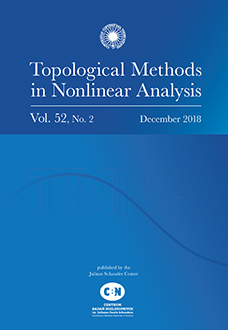Abstract
We study a classic free boundary problem modeling solid tumor growth. The problem contains a parameter $\mu$. It is well known that the problem admit a unique radially symmetric solution with free boundary $r=R_S$ and a sequence of symmetry-breaking branches of axisymmetric solutions bifurcating from the spherical state $r=R_S$ at an increasing sequence of $\mu= \mu_\ell(R_S)$ ($\ell\geq 2$ even) with free boundary $r= R_S + \varepsilon Y_{\ell,0}(\theta) + O(\varepsilon^2)$, where $Y_{\ell,0}$ is the spherical harmonic of mode $(\ell,0)$. In this paper, we use group-theoretic ideas to obtain a plethora of new branches of non-axisymmetric solutions bifurcating at $\mu= \mu_\ell(R_S)$ $(\ell\geq 2)$. New solutions can model more complex shapes of tumor tissues than the known axisymmetric solutions. The approach is also applicable to many other free boundary problems arising in tumor growth, including a model involving fluid-like tissue.
Citation
Hongjing Pan. Ruixiang Xing. "Symmetry-breaking bifurcations for free boundary problems modeling tumor growth." Topol. Methods Nonlinear Anal. 60 (1) 387 - 412, 2022. https://doi.org/10.12775/TMNA.2021.064
Information





